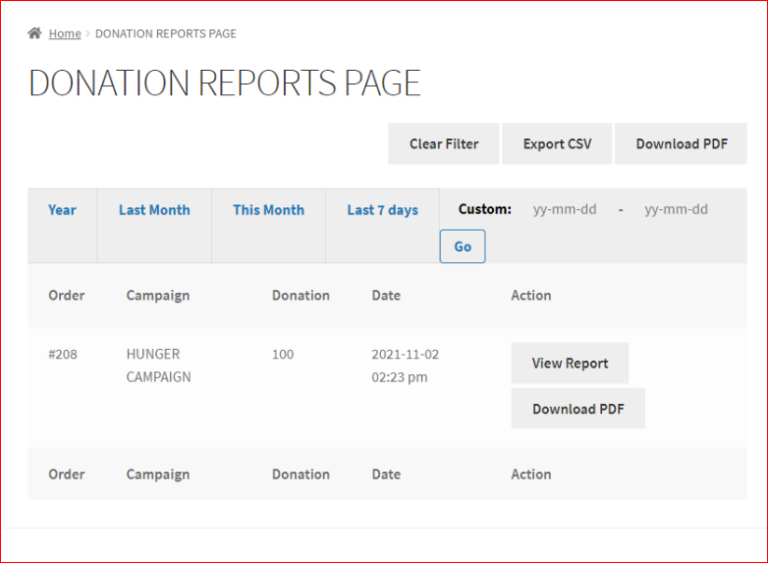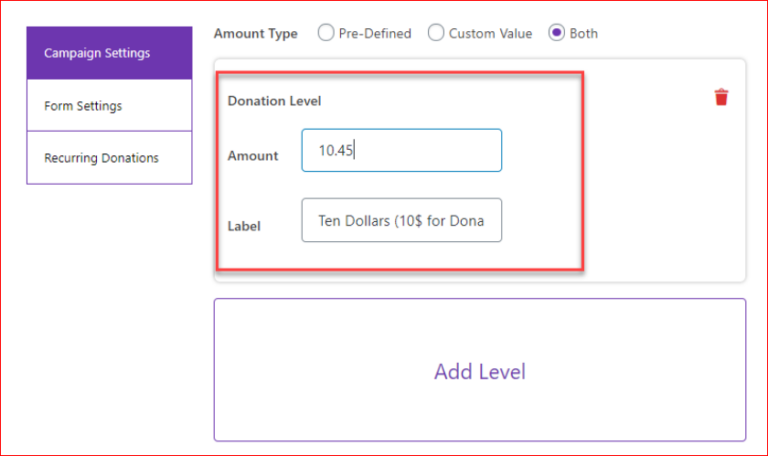Donation and charity scams are familiar, but have you ever considered the concept of spam donations?
Spam donations are online frauds that can harm nonprofits and donors. Scammers use stolen credit card information to make fake donations, testing the cards’ validity. These donations are often small, random, or from unknown sources, resulting in financial losses, chargeback fees, payment disputes, and damage to the nonprofit organization’s reputation and trust.
According to a recent report by Stripe, card testing fraud has increased by a factor of 100 since 2019, and nonprofits were among the most targeted industries.
As a nonprofit, you should know the risks and take preventive measures to protect yourself from spam donations. Continue reading to learn how spam donations work, how they affect your nonprofit, and how to prevent them effectively.
The Most Common Types of Spam Donations
You can receive spam donations in various forms and for various reasons. Still, they all share the same goal: exploiting the online donation system for fraud. Below, we will look into a few of the most common types of spam donations you might encounter.
1. Fake or Stolen Credit Card Donations
Receiving donations from fake or stolen credit cards can be a nightmare for nonprofits. Scammers use card testing spam, acquiring stolen credit card details, and making small donations to test their validity. This illicit activity involves purchasing card information from the dark web and attempting transactions on various websites, including nonprofit donation forms.
If the donation goes through, it indicates that scammers can use the card for larger purchases in the future. However, when these fraudulent donations are detected, nonprofits face chargeback fees and payment disputes, potentially harming their reputation and donor trust.
2. Fraudulent Recurring Donations
When scammers use a legitimate credit card to make a one-time donation but then change the settings to make it a recurring donation without the cardholder’s consent. They do this by accessing the donor’s account on the online donation platform or by hacking into the payment processor platform itself.
Just like one-time stolen card donations, fraudulent recurring donations can also harm nonprofits because they can lead to more chargeback fees, payment disputes, and even account suspension by the payment processor.
3. Bot-Generated Donations
Bot-generated donations pose another significant challenge for nonprofits. These fake donations originate from automated programs or “bots” masquerading as humans. Typically, bots target less secure donation forms and inundate them with a high volume of fake transactions.
Implementing a range of security measures, such as setting minimum donation amounts, regularly monitoring donation statistics, and utilizing reCAPTCHA verification, is the best approach to preventing bot-generated donations.
5 Key Reasons Why Preventing Spam Donations Is a Good Idea
At first glance, you might think, who wouldn’t want free money? Everyone does, right? Well, that’s not entirely true!
As the famous saying goes, “Not All Money Is Good Money.”
This statement holds true for spam donations, which cause numerous problems and damage nonprofits’ reputations.
With that in mind, let’s look into the five key reasons why it’s a wise move to prevent spam donations:
1. Protection of Financial Resources: In most cases, the original user of the stolen credit card claims the refund, which leads to financial loss for the organization due to processing fees, etc. Spam donations can result in financial losses. Hence, nonprofits can protect their financial resources by preventing spam donations and allocating them effectively toward their mission.
2. Safeguarding Reputation and Trust: When scammers exploit an organization’s donation form, it raises concerns about its credibility and competence. Conversely, taking preventive measures against fake donations helps maintain a positive image and preserves the trust of donors and supporters.
3. Reducing the Risk of Fraud: Often, scammers engage in fraudulent activities. By making a small donation, they may verify and gather personal information from the stolen cardholder, which they can later use for further theft. This puts the organization’s sensitive systems and personal information at risk.
4. Compliance with Legal Regulations: Accepting fraudulent donations can have legal implications. Nonprofits must comply with regulations related to financial transactions and data protection. Preventing fraudulent donations prevents legal issues, monetary penalties, and legal action.
5. Efficient Resource Allocation: Sorting through spam donation requests consumes valuable time and resources, impeding the organization’s ability to process legitimate donations and carry out essential activities related to its cause. Implementing a spam prevention mechanism saves time and effort, allowing resources to be allocated more efficiently and maximizing the organization’s impact.
How to Identify and Stop Spam Donations Using Donation for WooCommerce
You should now have a clear idea of how negative spam donations can impact your nonprofit. But don’t worry! We will show you an easy two-step process that can help you easily identify and stop spam donations.
Note: Before proceeding, you must install the Donation for WooCommerce plugin. The complete installation guide is here.
Step#1: Monitor Your Donation Stats Regularly
Once you have installed and activated the plugin, follow the below steps to add the donation page reports page using the shortcode:
- Go to WordPress Admin Dashboard and navigate to Pages.
- Click on Add New to create a new page.
- Enter the title of the page.
- Add a block by clicking on the plus (+) sign.
- Choose the Shortcode element from the menu.
- Then, paste [donation_reports] in the shortcode box.
- Now, hit the Publish button to complete the publishing process.
- Finally, access the donation page reports to view and download detailed campaign reports, which will help you quickly identify suspicious or fake donations.

Step#2: Set Minimum Donation Amount
If you find suspicious transactions in the donation report, simply set the minimum donation limit higher than the fake donation amount. This is one of the easy ways to prevent your donation form from counterfeit donations.
To do this, go to the Campaign Settings section and adjust the amount to your desired minimum, as shown in the screenshot below.

Some Additional Security Measures to Prevent Donation Scams
In addition to the steps above, here are a few more strategies to fortify your defenses against fraudulent donations.
– Always Keep Your Website’s Security Updated
Maintaining up-to-date security measures for your website is a fundamental aspect of protecting your nonprofit from donation scams. Regularly update your website’s security software and plugins to ensure you have the latest security patches, guarding against potential vulnerabilities.
Furthermore, consider using a reputable web hosting service that prioritizes security and provides features like SSL encryption. SSL certificates establish a secure connection between your website and visitors, encrypting sensitive information and thwarting unauthorized access or data breaches.
– Set up reCAPTCHA (Google reCAPTCHA)
Integrating reCAPTCHA, a widely used Google service, is another effective security measure to prevent donation scams. reCAPTCHA acts as a gatekeeper, distinguishing between genuine human users and automated bots attempting to exploit your donation form.
With a mechanism like this on your website, every user has to complete a simple verification process, such as identifying specific objects or solving puzzles, to confirm their human identity, which effectively filters out automated bot attempts and ensures that only legitimate donors can proceed with their contributions.
Your Best Options for Handling the Spam Donations You’ve Received
Keeping fake donations money is inappropriate for your nonprofit. Therefore, taking swift action to mitigate the impact of these fraudulent transactions is crucial.
Here are some of the best practices you can employ to handle spam donations effectively:
- Refund The Donation Amount: When you identify a spam donation, you immediately refund the donation amount to the fraudulent donor using the same payment method you used to receive the funding.
- Block The Donor Immediately: To prevent further spam donations from the same source, block the fraudulent donor immediately. By implementing measures such as blocking the donor’s IP address, email address, or any other identifiable information, you can effectively prevent them from making additional fraudulent contributions.
- Report Spam Transactions to Your Payment Gateway: Most payment gateways have fraud detection mechanisms and can handle such incidents. Reporting spam transactions provides valuable information to the payment gateway, enabling them to enhance their security measures and investigate further if necessary.
By combining these options—refunding the donation amount, blocking the donor immediately, and reporting spam transactions to your payment gateway—you can effectively address spam donations and minimize their impact on your nonprofit organization.
Final Thoughts
Undoubtedly, preventing spam donations is vital for nonprofit success. With measures like monitoring donation stats, setting minimum amounts, and using tools like the Donation for WooCommerce plugin, you can protect against fraudulent transactions.
However, if you receive spam donations, your first logical action should be to refund the donation amount through the same payment method, block the user, and immediately report the incident to the payment processor. This will safeguard your nonprofit organization from the detrimental effects of spam donations.
So, stay vigilant, be responsive, and inspire trust in your supporters as you work towards your charitable goals. Happy Donations!